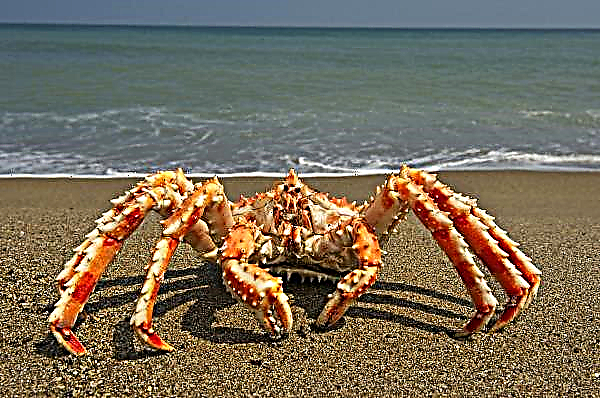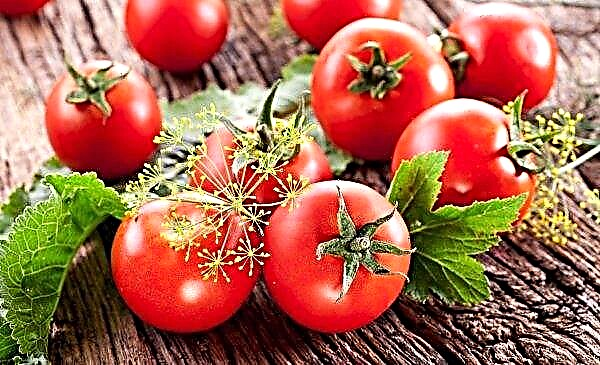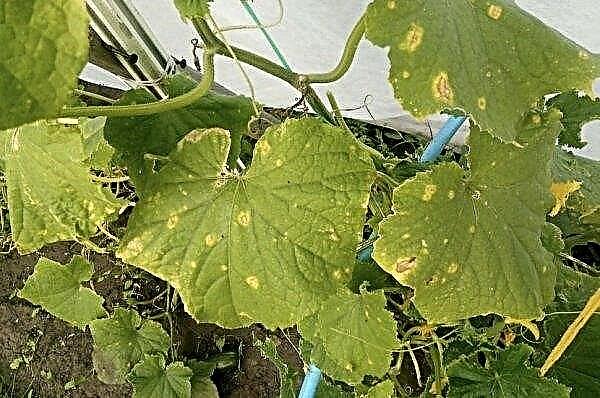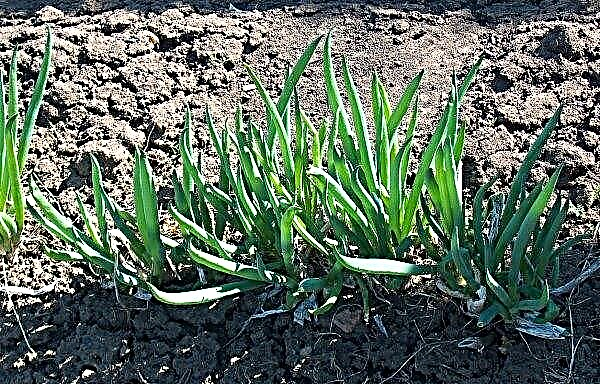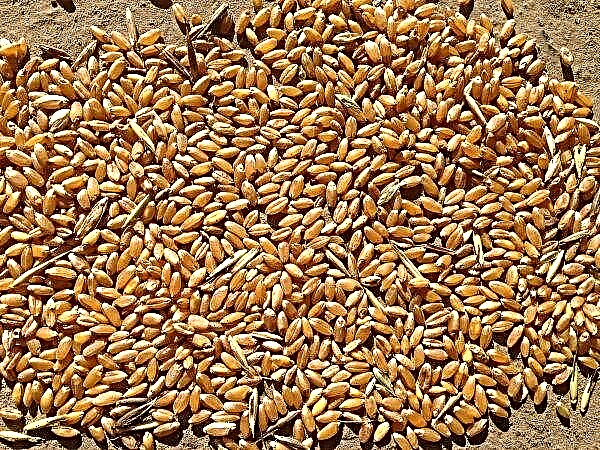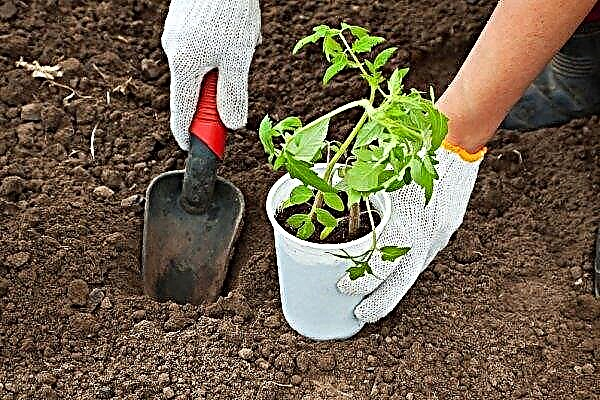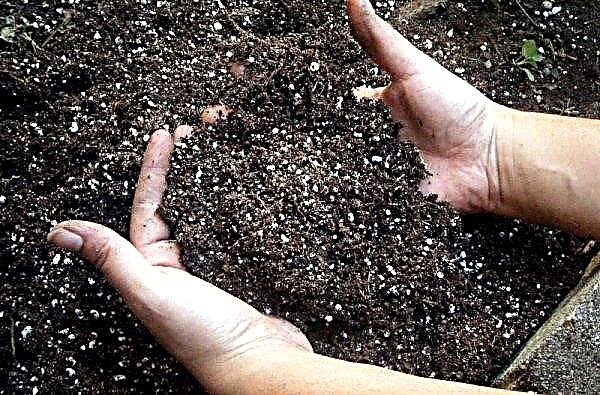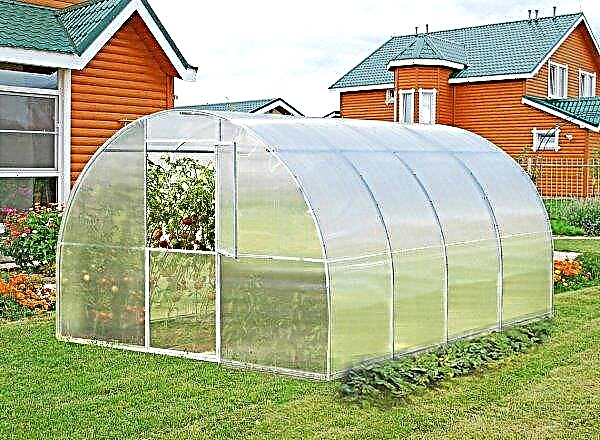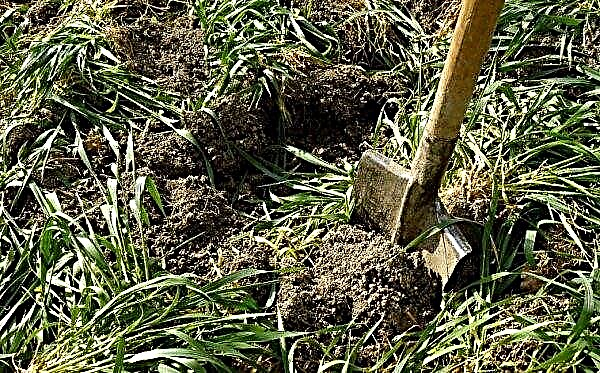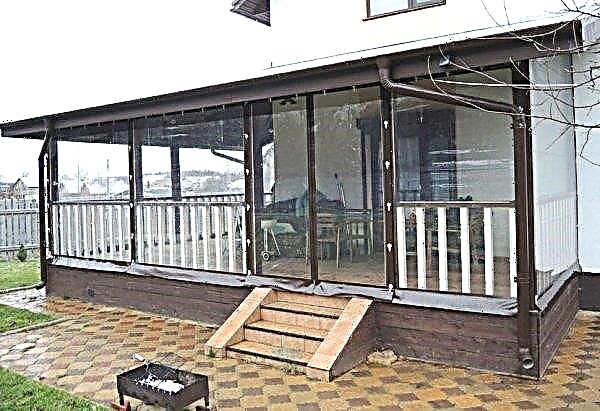Among the well-known modern varieties of tomatoes, “Banana Legs” stands out not only for its unusual name, but also for its rather exotic appearance, which, together with its unusual taste qualities, has caused great interest among domestic summer residents. About what kind of variety it is, what indicators of productivity it possesses and what it is worth knowing about the rules for its cultivation - the article will be discussed.
Grade description
"Banana legs" is a semi-determinate variety, medium early ripening period, recommended for cultivation in open soil. From the time of planting seedlings to the technical maturity of the fruit, 60–70 days pass, after which you can proceed to the harvest.
External features and basic characteristics of plants of this variety are expressed in the following:
- the average height of the bushes is 60-150 cm;
- the trunk is lean;
- leaves are green, thin, with many thin branches;
- fruits - elongated and slightly pointed in the lower part, bright yellow, collected in brushes of 7-10 pieces;
- the average weight of one tomato is 60–110 g;
- the pulp of the fruit is fleshy, with a dense peel and a characteristic pearlescent sheen;
- yield from the bush - 4-6 kg.
Did you know? The originator of the Banana Legs tomato variety is American Tom Wagner, who presented the world with this unique tomato in 1984.
The highest yield indicators can be achieved when growing bushes with 3-5 stems. The undeniable advantage of the variety is the plant's good resistance to common tomato ailments.

Advantages and disadvantages
- In addition to good resistance to fungal and infectious diseases, the described plants have a number of other, undeniable advantages, these are:
- fairly high productivity;
- exotic look;
- uniformity of formation and ripening of fruits;
- dense peel, allowing for a long time to store and transport the collected fruits;
- the possibility of growing in a seedlingless way;
- high percentage of seed germination;
- a special taste of tomatoes, a bit like citruses;
- fleshy flesh.
Fruit application
Unripe fruits are perfect for whole-fruit preservation, and their unusual appearance gives the workpieces a special sophistication. Fresh tomatoes can be used for salads (give them a pleasant citrus flavor), cooking sauces and pastas. They can also be dried, fermented, dried or pickled.

Planting and growing tomatoes at home
"Banana legs" are equally well suited both for planting on seedlings, and for growing in a seedling-less way, so that every gardener can choose the most suitable option.
Optimal conditions for growing
If you decide to sow seeds for seedlings, then from the expected date of planting of the grown plants in open soil you need to count 60–70 days, that is, you can perform the procedure from the end of March or the beginning of April. There is nothing difficult to plant, and by and large this process is no different from sowing other seeds, unless you have to pay more attention to preparing a suitable substrate, maintaining the required temperature values, the proper level of illumination and humidity.

Optimum temperature and humidity indicators:
- in the first weeks after sowing, the temperature in the room with seedlings is better to maintain in the aisles + 22 ... + 26 ° C, with a gradual further decrease to +15 ° C;
- lighting - diffused in the first weeks, and after the appearance of the first shoots, a container with seedlings can be placed in a more illuminated place;
- humidity during the entire period of seed germination should remain within 50-60%.
Important! When sowing seedlings in early spring, it may be necessary to artificially illuminate it, especially if the first spring days do not differ in brightness and warmth.
Soil treatment
The ideal soil mix for Banana Legs tomatoes is a substrate consisting of:
- turf land from deciduous meadow or deciduous forest;
- fully ripened humus;
- coarse river sand, well washed with water;
- ash (not more than 100 g per 3 kg of soil mixture);
- crushed chalk (not more than 50 g per 3 kg of soil).

If necessary, the turf soil can be replaced with ordinary garden soil by cutting off a 15-cm layer, but in any case, before planting or sowing tomatoes, you will have to calcine it in the oven and spill it with a potassium permanganate solution.
Planting Material Processing
Preparation of seeds of tomato "Banana legs" begins about two months before the planned date of sowing. Having selected only suitable seed, it is soaked in a weak solution of potassium permanganate and slightly dried. Sometimes a growth stimulator is used instead of potassium permanganate, but only in strict accordance with the instructions.
Sowing technology
The technology of sowing seeds of the described variety is no different from the process of planting seeds of other varieties. First, in prepared and moistened soil, you need to organize grooves, 2-3 cm deep, and then place seeds at a distance of 2 cm from each other. 3-4 cm are left between the grooves themselves. The laid out seeds need to be sprinkled with the remaining soil and lightly compacted.
It is advisable to cover the box with sown tomatoes with a film or glass, and then place it in a rather warm room (+ 22 ... + 26 ° C), illuminated by diffused sunlight. After the first young plants appear, the amount of light in the room can be increased, and the temperature can be reduced to +18 ° C (the relatively low temperature indicators in the room will not allow the seedlings to grow strongly).

Preparing for transplanting seedlings
Before planting the grown seedlings in the open territory, they need to be fed three times with complex fertilizers. For the first time, “Banana legs” are fertilized at the stage of the appearance of the third leaf, using preparations such as “Agricola No. 3” for this. The second and third feeding is carried out at intervals of a week, immediately after the first, and nitrophosk is already used as a nutritional composition.
The soil acidity at the new place of tomato growth should be close to neutral, with an indicator of 6–7 pH. If these values are exceeded, lime will have to be added to the soil. As for the soil fertilizer on the site, it is introduced even at the stage of autumn digging, using settled humus and mineral additives of phosphorus and potassium salts.

Planting seedlings in a permanent place
At the end of May, having prepared the soil on the site and having organized the holes, you can transplant tomato seedlings. In the case of the “Banana Legs” variety, no more than 4 plants per 1 m² of territory should be present. If desired, the soil in the wells can be mixed with fertilizer, but only so that it does not burn the delicate roots of young plants. It is better to remove seedlings from seedlings with a small earth lump on the roots, but try not to break off and damage them. Each plant should be placed exactly in the center of the pit, after which it only needs to be sprinkled with soil, a little tamped and watered.
Did you know? In the XV – XVI centuries Tomatoes were grown only as exotic plants, often planted around arbors. Their fruits have long been considered poisonous and not used for cooking.
Features of tomato care
Care of planted seedlings is based on regular watering, top dressing and soil care, the features of which are not much different from similar events when growing other varieties.
Fertilizers and fertilizers
For the first time after transplanting, the plants are fed after 10 days, using a solution of mullein with the addition of 1 tbsp. l urea. The finished mixture should be non-concentrated, that is, diluted with water in a ratio of 1:10.

During the summer cultivation of tomatoes, two additional top dressings are also carried out: at the beginning of flowering and when the first fruits appear on the bushes. In this case, you can feed the plants foliar way, using ready-made complex fertilizers.
If the summer turned out to be rainy and there is a sharp fluctuation in average daily temperatures, it is useful to treat the leaves with a solution of boric acid, iodized milk or yeast water.
Watering
Watering requirements are standard. It must be carried out in accordance with weather conditions and always be metered to prevent overmoistening of the soil and decay of the root system. To determine whether plants need moisture or not, just look at the topsoil: do not allow drying and cracking.
Important! To preserve moisture, it is advisable to mulch the soil around the tomato bushes with straw, dried lawn grass or sawdust.
Stepson
On the package with seeds of tomato "Banana legs" it is indicated that the bushes do not need to be planted, however, the reviews of gardeners say something else. To get a good harvest, summer residents are advised to remove stepsons after the formation of the bush, otherwise a large number of formed shoots and leaves will begin to draw the juices from the plant, which will lead to chopping of the fruits. It is advisable to leave no more than 5 shoots on one bush, which in most cases is recommended to be tied to a support. Wooden stakes or a metal mesh stretched along the rows with a large number of cells are perfect for the role of such an addition. For garter of tomatoes, you can use soft rag ropes, which are attached immediately under the leaves, and the second ends to the exposed support. By the way, the metal mesh in this regard is more convenient, since it allows you to reliably fix it in several places as the plant grows.

Soil cultivation and weeding
Removing weeds and loosening the soil under the bushes is best done after irrigation or rain, when the earth is easily amenable to such processing. For good growth, the root system requires the intake of a sufficient amount of air, so it is advisable to perform the procedure at least 1 time per week.
Diseases and Pests
Tomatoes of the described variety are highly resistant to common tomato ailments, due to which cases of late blight or rot are rare.
At the same time, preventive measures during the cultivation of the variety will not be superfluous, therefore, gardeners are recommended to perform the following actions:
- sow white mustard between rows, and as soon as it reaches a height of 15–20 cm, cut off the plants and put them on the earth’s surface as the first layer of mulch (mustard resists reproduction of pathogens well);
- hang open bottles with iodine to the upper greenhouse supportsso that the vapors of the substance can freely exit and thereby reduce the risk of incidence of planted tomatoes;
- sprinkle bushes with garlic infusion (100 g of plant gruel per 5 l of water) at the initial stage of flowering;
- monitor planting density and timely remove weeds, loosen the soil.

At the first signs of ailment activity, it is advisable to immediately treat the plantings with special preparations: for example, Oksikhom, Monsoon, Karbofos. This will help prevent the spread of infection and protect the rest of the plants.
Harvest Dates
From the moment of appearance of the first green sprouts and until the harvest of the variety “Banana Legs” usually takes at least 60–70 days. If you plan to put the tomatoes for long-term storage, then it is advisable to pick the fruits at the stage of incomplete maturity, since they are distinguished by higher rates of shelf life.
When removing tomatoes from the bush, always leave the stalk open: this will reduce the vulnerability of the tomato to pathogens. Damaged specimens are immediately discarded and separated from the rest of the crop, which is best sent for storage in a dry and cool basement or cellar. If possible, it is worth decomposing the crop into boxes in several layers, each of which is transferred with thick cardboard or thick paper.

It is better not to store tomatoes in the refrigerator, because they will quickly lose their beneficial properties and their nutritional value will decrease significantly.
In general, the variety of tomatoes "Banana legs" - a worthy option for growing in any suburban area. At a minimum, it can be planted simultaneously with other, more familiar varieties, to once again make sure of the high decorative and taste properties of the harvested crop.
Video: Harvest sotr of tomato “Banana legs”
Network user reviews
ADVANTAGES: a very productive variety! DISADVANTAGES: a slightly dense peel Hello! For the second year I have been growing tomato Banana legs. This is just some kind of madness! Purely by chance in the next gifts I found these seeds. The name was very surprised)) legs, and even banana, and even tomatoes. The variety itself is already ancient - in 1988 and began to grow it in the United States. Slowly got over to us. She planted a tomato. Banana legs straight into the greenhouse, then planted. There were only 10 seeds, there were 9 pieces, they survived to the transplant 7. I consider this an excellent result! I will not describe the planting and transplant in detail - everything is standard, as with all tomatoes. It's just a miracle, not a tomato. Already in green, they look exotic. All such in a marble strip, like an exotic fruit hanging. Very abundant fruiting! I was advised not to pinch, but I neglected the tips and very carefully did this procedure with several bushes of tomato Banana legs. On the stepson bushes, the harvest was noticeably larger! The branches of the tomato are thin, and the fruits are large. very afraid. that will break, tied up neatly. In a greenhouse, a tomato flickered a meter and a half! Straight jungle real with yellow icicles! Although they wrote that it grows up with a small bush strewn with tomatoes. The weight of tomatoes is large. I definitely didn’t weigh each tomato, but in a kilogram it was about 8-10 pieces. Seven bushes of tomato. Banana legs just overwhelmed me with tomatoes for the very tomatoes)) we ate and distributed them. Preserved a lot. The taste is excellent! Fleshy ones. By the way, they look interesting in appearance - there is practically no foliage. And very light! Tore green in the fall and ate the last one before the New Year. Yes, straight to the salad))) Very happy with the variety! Extremely fruitful! But now I will plant less, it will be enough and 3 bushes because they overwhelm the crop.

